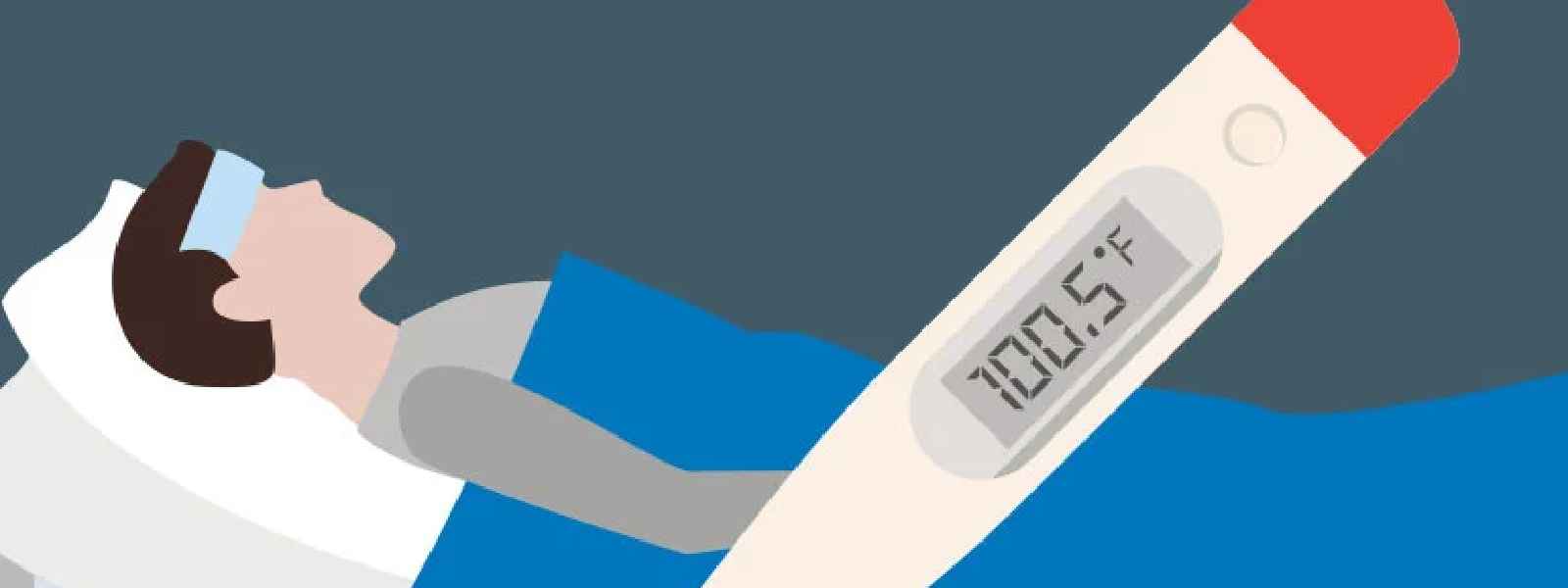 Over 30,000 dengue cases have been reported over the last four months of 2023, the Sri Lanka Medical Association (SLMA) warned.
Over 30,000 dengue cases have been reported over the last four months of 2023, the Sri Lanka Medical Association (SLMA) warned.
 COLOMBO (News 1st); Sri Lanka's health sector warns that an influenza virus is spreading across the country.
COLOMBO (News 1st); Sri Lanka's health sector warns that an influenza virus is spreading across the country.
 The Association of Health Entomologists has observed a continued increase in the number of dengue patients being reported.
The Association of Health Entomologists has observed a continued increase in the number of dengue patients being reported.
 The National Dengue Control Unit says that there is a risk of increasing the number of dengue cases again with the rains.Over 19,000 dengue cases have been reported so far this year.
The National Dengue Control Unit says that there is a risk of increasing the number of dengue cases again with the rains.Over 19,000 dengue cases have been reported so far this year.
 Sri Lanka is seeing a rapid rise in the cases of its age-old enemy dengue fever once again, the National Dengue Control Unit says.
Sri Lanka is seeing a rapid rise in the cases of its age-old enemy dengue fever once again, the National Dengue Control Unit says.
Dengue Fever Symptoms
[iceaccordion theme="simple"][accordionslide title="Introduction"]Dengue Haemorrhagic Fever is a mosquito-borne viral infection endemic in the tropical and sub-tropical regions. The female Ae.aegypti (the most important vector) mosquito is semi-domesticated, preferring to lay its eggs in man-made water containers, resting indoors and feeding in the early morning or late afternoon. There are 4 serotypes of Dengue virus. Dengue usually occurs as epidemics in Sri Lanka following monsoon seasons.
According to data from epidemiology unit of Sri Lanka, the number of total cases recorded for year 2009 is 32713. Most affected district was Kandy. Colombo, Gampaha and Kaluthara districts which have been susceptible in the past have also recorded a high rate of infection and deaths.[/accordionslide][accordionslide title="Causative agents"] Dengue virus; There are 4 serotypes of the single-stranded RNA virus (flaviviridae).[/accordionslide][accordionslide title="Pathogenesis / Action in the body"] Patients become infected once bitten by mosquitos. The virus passes to lymph nodes and replicates which is followed by spread to the circulation and other tissues. It is thought that infection with a secondary serotype is what leads to severe haemorrhagic disease.[/accordionslide][accordionslide title="Symptoms and signs"]Disease varies in severity
- Incubation period is 2-7 days.
- All haemorrhagic fever syndromes begin with abrupt onset of fever (39.5–41ºC) and myalgia.
- Fever is often biphasic with two peaks.
- Fever is associated with frontal or retro-orbital headache lasting 1–7 days, accompanied by generalised macular, blanching rash.
- Initial rash usually fades after 1–2 days.
- Symptoms regress for a day or two then rash reappears in maculopapular, morbilliform pattern, sparing palms and soles of feet. Fever recurs but not as high. There may be desquamation.
- DF cases experience severe bony and myalgic pain in legs, joints and lower back which may last for weeks (hence breakbone fever).
- Nausea, vomiting, cutaneous hyperaesthesia, taste disturbance and anorexia are common.
- Abdominal pain may occur and if severe suggests DHF pattern.The signs of dengue fever/ Dengue haemorrhagic fever are- High fever, rash, hypotension and narrow pulse pressure, poor capillary refill.
- There may be hepatomegaly and lymphadenopathy.
- A tourniquet placed on an arm may induce petechiae in early DHF cases. DHF sufferers exhibit a bleeding tendency as evidenced by petechiae, purpura, epistaxis, gum bleeding, GI haemorrhage and menorrhagia. There may be pleural effusion, ascites and pericarditis due to plasma leakage.
- Petechiae are best visualised in the axillae.
- Flushing of head and neck.
- Tender muscles on palpation.
- Periorbital oedema and proteinuria may be present.
- Maculopathy and retinal haemorrhages may also occur.
- DSS pattern cases progress through DHF until profound shock due to severe hypotension is present.
- CNS involvement e.g. encephalopathy, coma, convulsions.[/accordionslide][accordionslide title="Complications"]
- Hepatic failure: Means failure of the liver
- Encephalopathy: Means damage to the brain causing fits, loss of consciousness and confusion- Myocarditis – Inflamation of heart muscles
- Disseminated intravascular coagulation - Damage to blood vessels and blood cells causing problematic bleeding and clottingDengue can cause death[/accordionslide][accordionslide title="Investigations"]- FBC - low platelets and high packed cell volume if haemoconcentrated. Usually white cell count will fall
- Infection may be confirmed by isolation of virus in serum and detection of IgM and IgG antibodies for Dengue by ELISA, monoclonal antibody or haemagglutination
- Molecular diagnostic methods such as reverse-transcriptase-PCR are increasingly being used.
- Chest X-ray may show pleural effusion. [/accordionslide][accordionslide title="Management"]- Bed rest
- Nutritious diet and lot of liquids, But avoid red and brown foods and drinks like coffee, chocolate, grapes etc as it may misinterpret vomiting as blood stained vomitus.
- Fever control with paracetamol, tepid sponging and fans. Aspirin should be avoided.
- Need to seek advice from a qualified medical practitioner if fever lasts for more than 2 days
- Hospital managemnt includes intravenous fluid resuscitation with close monitoring. Haemorrhage and shock will require Fresh Frozen Plasma, platelets and blood. Intensive management with inotropes of the shock syndrome may be required in severe DHF/DSS cases. [/accordionslide][accordionslide title="Prevention and Promotion"]- Vaccines are being researched
- Anti-mosquito public health measures such as reducing breeding sites ( flower pots, fish tanks,tires, coconut shells, tins, water collecting plants, gutters which can collect water) and good sewage management
- Insecticides to destroy the larvae
- Mosquito nets can be used during day time as the Aedes mosquitoes is day-biting.
- Mosquita repellents
- There is a bacteria called Bacillus thuringiensis which destroy the mosquito larvea[/accordionslide][/iceaccordion]






